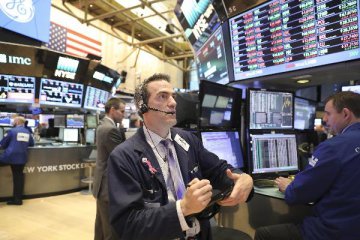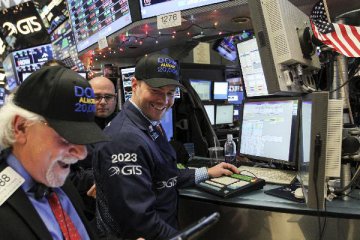For the week, Dow declined 0.46 percent and had its first weekly pullback in over a month. The S&P 500 fell 0.33 percent, snapping a six-week winning streak. The Nasdaq dropped 0.25 percent, ending a seven-week winning streak.
On the corporate side, Tesla shares erased 6.14 percent on Friday, among the worst performers in the Nasdaq. The U.S. electric car maker unveiled its long-awaited electric pickup truck on Thursday. The stock slid 5.43 percent for the week.
Home Depot shares dipped 8.12 percent for the week on the back of weaker-than-expected same-store sales data for the previous quarter.
Wall Street pored through minutes from the Fed's October policy meeting released on Wednesday.
"Uncertainties associated with trade tensions as well as geopolitical risks had eased somewhat, though they remained elevated," said the minutes, adding "the risk that a global growth slowdown would further weigh on the domestic economy remained prominent."
The Fed lowered interest rates by 25 basis points late last month amid a further slowdown in U.S. economic growth, the central bank's third rate cut this year. These policy adjustments put the current federal funds rate target range at 1.5 percent to 1.75 percent.
On the data front, U.S. consumer sentiment index stood at 96.8 in November, above the October level of 95.5, showed data released Friday by the University of Michigan. Economists polled by Dow Jones expected consumer sentiment to dip to 94.9 for November.
The seasonally adjusted flash U.S. services business activity index registered 51.6 in November, up from 50.6 in October, according to IHS Markit on Friday. The IHS Markit flash U.S. manufacturing purchasing managers' index (PMI) rose to 52.2 this month from 51.3 in October.
In the week ending Nov. 16, U.S. initial jobless claims, a rough way to measure layoffs, came in at 227,000, unchanged from the previous week's revised level, the Department of Labor reported Thursday. Economists polled by MarketWatch had forecast new claims to total 218,000 after seasonal adjustments.
The reading also represents the highest level since June 22, indicating some softening in the labor market.
Meanwhile, the leading economic index for the United States declined 0.1 percent in October to 111.7, following a 0.2 percent decline in both September and August, according to a report by The Conference Board.
"The decline was driven by weaknesses in new orders for manufacturing, average weekly hours, and unemployment insurance claims," said Ataman Ozyildirim, senior analyst at The Conference Board.





















Latest comments